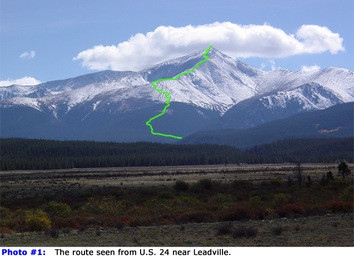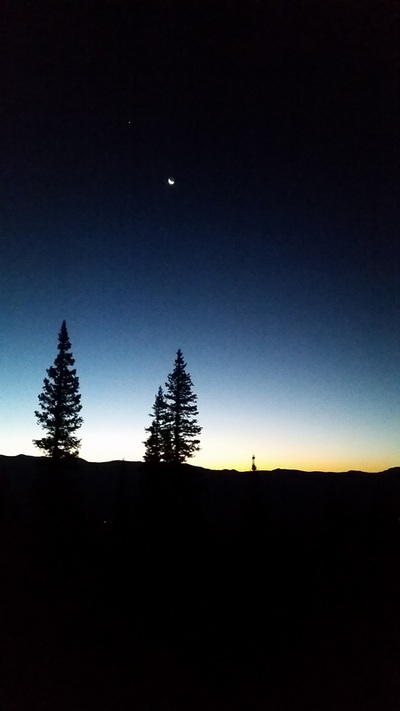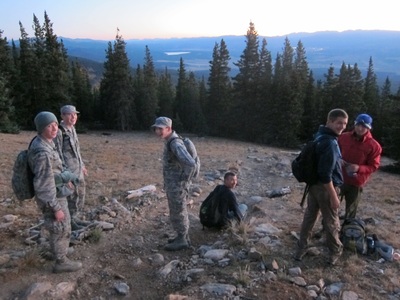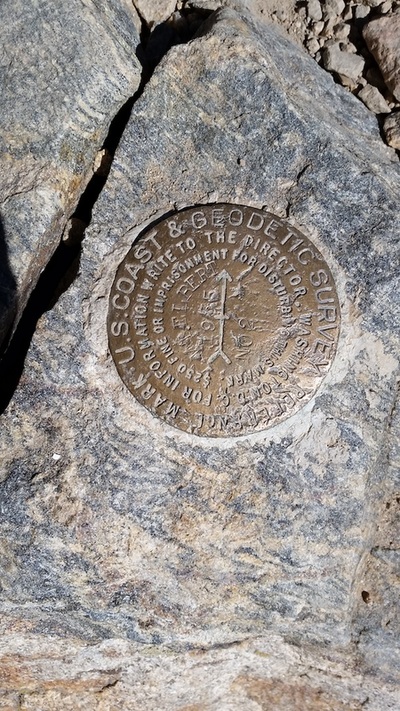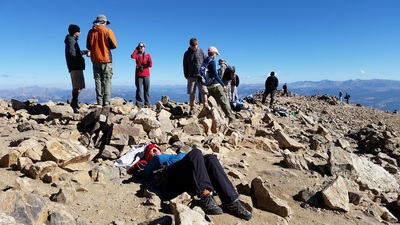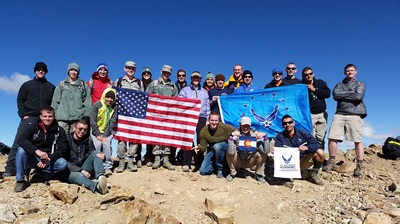colorado: Mt. elbert (14,433ft)
|
Highpoint detailsMount Elbert is the highest peak in the Rocky Mountains of North America. At 14,440 feet (4,401 m), it is the second-highest mountain in the contiguous United States (after Mount Whitney in
California), the highest of the fourteeners of Colorado, the fourteenth-highest mountain in the United States, and the highest point of the Sawatch Range. The mountainous terrain is categorized as Class 2 Level or A+ in mountaineering parlance. Mount Elbert is referred to as the "gentle giant" that tops all others in the Rocky Mountains. Mount Elbert was named by miners in honor of Samuel Hitt Elbert, the governor of the then Territory of Colorado, because he brokered a treaty in September 1873 with the Ute tribe that opened up more than 3,000,000 acres (12,000 km2) of Indian reservation to mining and railroad activity.[13] The peak was first climbed in 1874, by H. W. Stuckle, who was surveying the mountain as part of the Hayden Survey.[3] There are three main routes which ascend the mountain, all of which gain over 4,100 feet (1,200 m) of elevation. The standard route ascends the peak from the east, starting from the Colorado Trail. The 4.6 miles (7.4 km) long North (Main) Elbert Trail begins close to the Elbert Creek Campground, and gains about 4,500 feet (1,400 m).[19][20] The trail is used by equestrians, mountain bikers and hunters during season. [21] An easier, but longer route, the South Elbert Trail, is 5.5 miles (8.9 km) long, climbing 4,600 feet (1,400 m) at a less punishing gradient than the North Elbert Trail, approaching from the south and then climbing the eastern ridge.[19] The most difficult is the Black Cloud Trail, a Class 2 climb that takes ten to fourteen hours depending on the pace, gaining 5,300 feet (1,600 m) in elevation, and also involves an ascent of the sub-peak, South Elbert, at 14,134 feet (4,308 m).[22] There are also routes approaching from the western face, and southwestern ridge, from South Halfmoon Creek Trailhead and Echo Canyon Trailhead respectively.[22] Although strenuous and requiring physical fitness, none of the conventional routes require specialist skills of mountaineering or technical rock climbing. The main dangers of the mountain are those of conditions–altitude sickness. This can affect anyone, even those who are acclimatized. In serious cases, it can lead to high-altitude pulmonary edema and cerebral edema, which can lead to difficulties with breathing, paralysis, and death. Climbers are recommended to set off at or before 6 a.m. Although the most conventional form of ascent is by hiking, Anna Elizabeth Dickinson, the orator, ascended the mountain on a mule borrowed from the U.S. government.[23] http://www.14ers.com/routemain.php?route=elbe1&peak=Mt.%20Elbert |
trip detailsTrip Leaders: Maj Nichelle Somers (USAFA), Capt Colin Merrin (Shriever), Capt Kate Shifani (USAFA)
Nearest Base: US Air Force Academy, CO Completed Date: Sat, 20 Sep 2014 Difficulty: Moderate (high altitude) |
All trip updates and progress will be posted in the blog below


